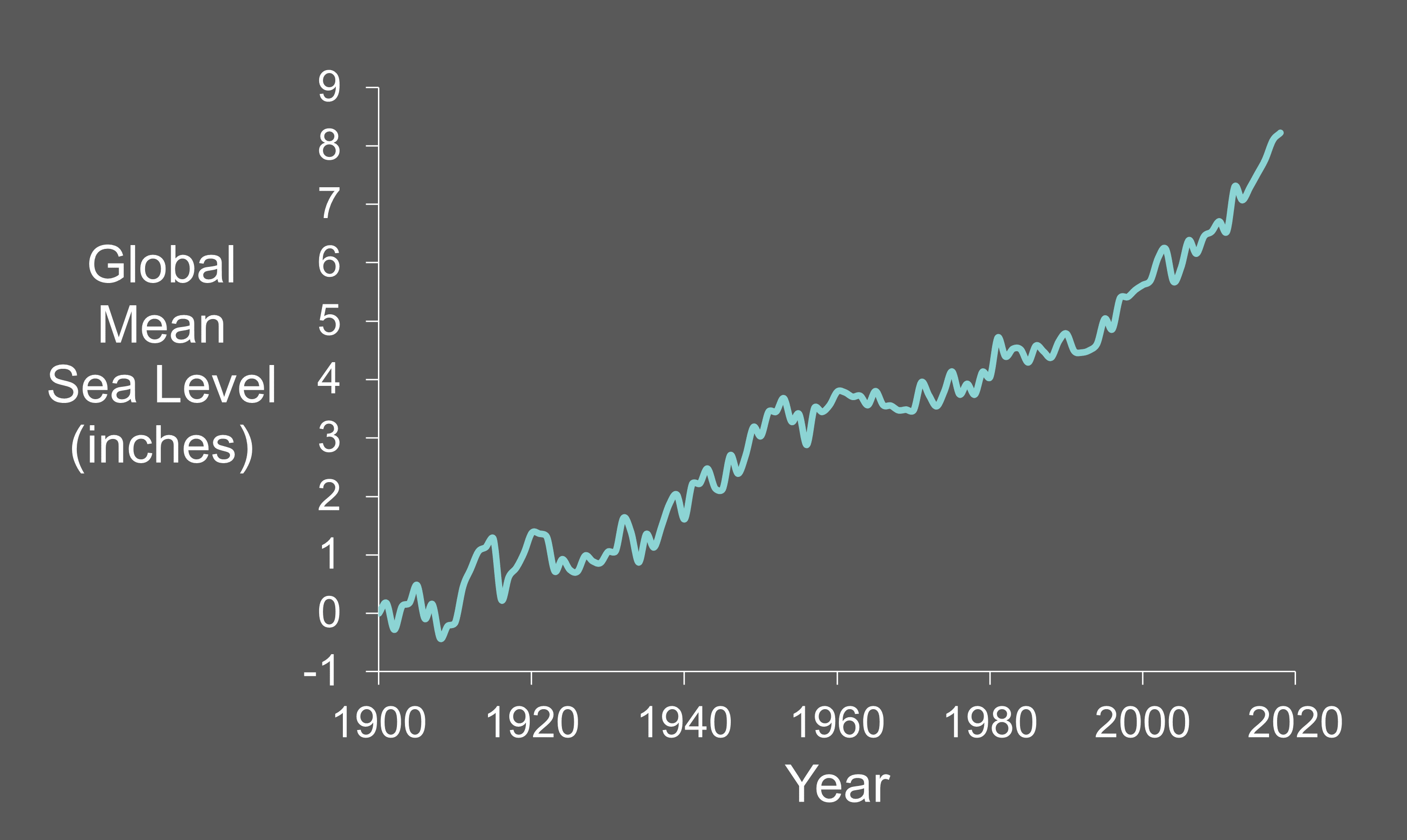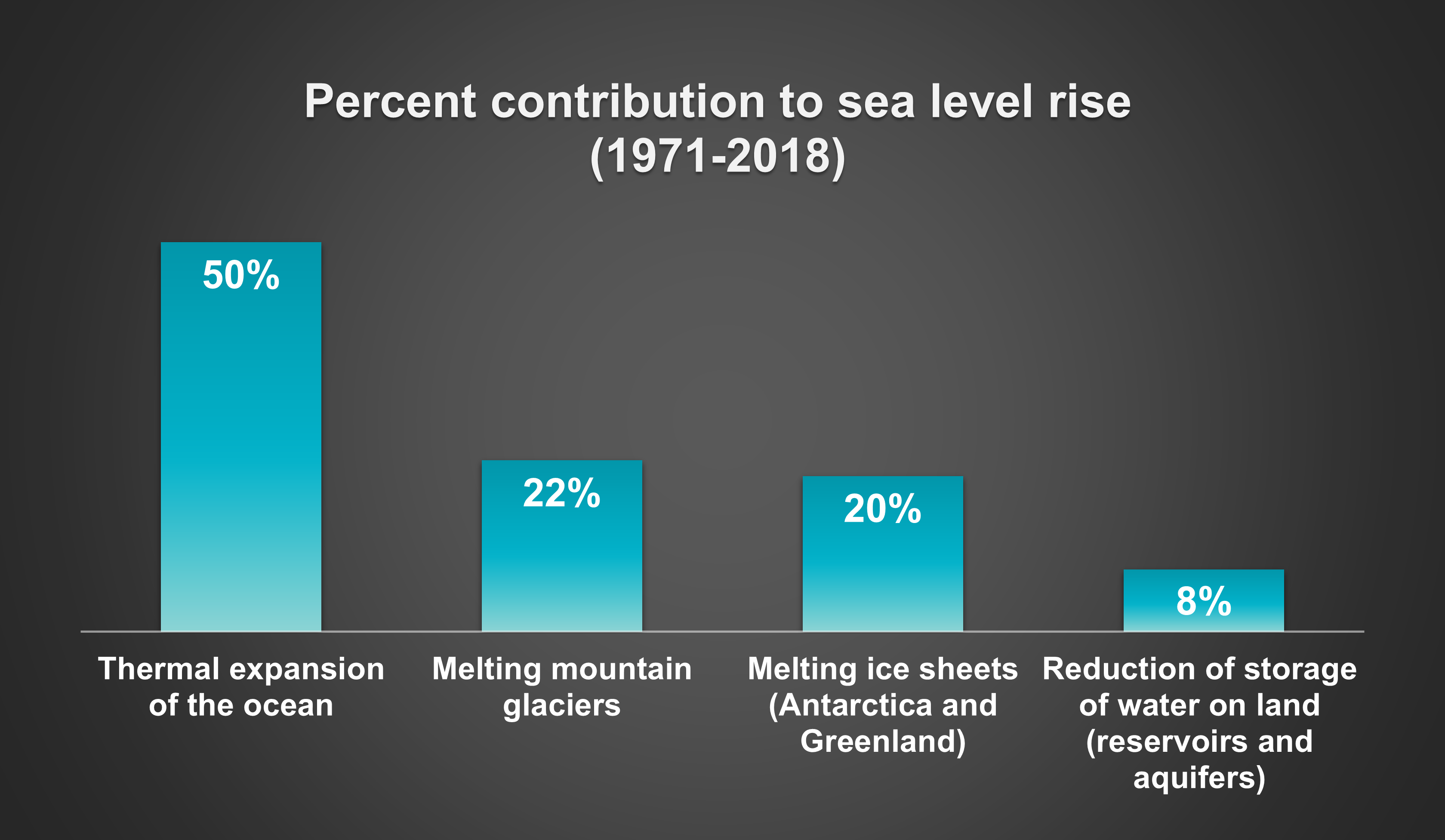Quick Answer
Sea level is rising now for two main reasons: 1) the ocean is expanding as it warms, and 2) water is being added to the ocean from melting of the Antarctic and Greenland ice sheets and mountain glaciers around the world.
Sea level is the height of the ocean’s surface relative to some fixed point on land. Sea level varies locally for various reasons, for example, when ocean currents pull water toward or away from coasts, effectively raising or lowering sea level. In some places sea level is affected by the land sinking (subsiding) or rising (being uplifted) because of geologic forces. We can compute a global sea level by averaging measurements from tide gauges and satellite instruments across all the oceans.
Right now, global sea level is rising. Figure 1 shows that from 1900 to 2018, global average sea level rose about 8 inches.[1] And the pace of sea level rise is accelerating. The rate of global sea level rise from 2006 to 2018 was more than twice as fast as the 20th century average rate.[2]

Figure 1. Global average sea level from 1900 to 2018, from Frederikse, T. et al. The causes of sea-level rise since 1900. Nature 584, 393–397 (2020). For data access, click here. Figure by Ingrid Zabel for PRI's Earth@Home project (CC BY-NC-SA 4.0 license).
Global sea level is rising partly as a result of a warming ocean. When water warms it expands, whether at the scale of a kettle of water on the stove or the vast volume of water that fills the world’s ocean basins. This expanding water in the ocean has nowhere to go but up, raising sea level.
Sea level is also rising as water is added to the ocean from melting glaciers and ice sheets. When ice on land melts, some of it eventually runs off to the sea, and this increases the total amount of water in the ocean. Finally, reservoirs and aquifers on land have been depleted over time, and that water has ended up in the ocean.
Figure 2 shows the percent contributions of all of the processes contributing to sea level rise between 1971 and 2018. Thermal expansion of the ocean accounts for about half of sea level rise during the period, and additions of water from land ice and land water storage account for the other half.

Figure 2. Percentage of sea level rise between 1971-2018 from different factors or sources. Data: IPCC [see reference 2 below]. Figure by Ingrid Zabel for PRI's Earth@Home project (CC BY-NC-SA 4.0 license).
Learn More
Digital Encyclopedia of Earth Science: Evidence for Recent Climate Change
References:
[1] Frederikse, T. et al. The causes of sea-level rise since 1900. Nature 584, 393–397 (2020). https://www.nature.com/articles/s41586-020-2591-3 [2] IPCC, 2021: Summary for Policymakers. In: Climate Change 2021: The Physical Science Basis. Contribution of Working Group I to the Sixth Assessment Report of the Intergovernmental Panel on Climate Change [Masson-Delmotte, V., P. Zhai, A. Pirani, S. L. Connors, C. Péan, S. Berger, N. Caud, Y. Chen, L. Goldfarb, M. I. Gomis, M. Huang, K. Leitzell, E. Lonnoy, J.B.R. Matthews, T. K. Maycock, T. Waterfield, O. Yelekçi, R. Yu and B. Zhou (eds.)]. Cambridge University Press. In Press. https://www.ipcc.ch/report/ar6/wg1/, accessed Aug. 30, 2021


